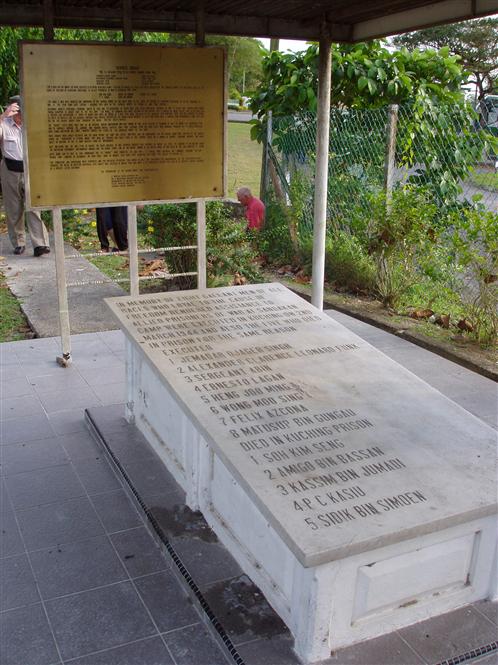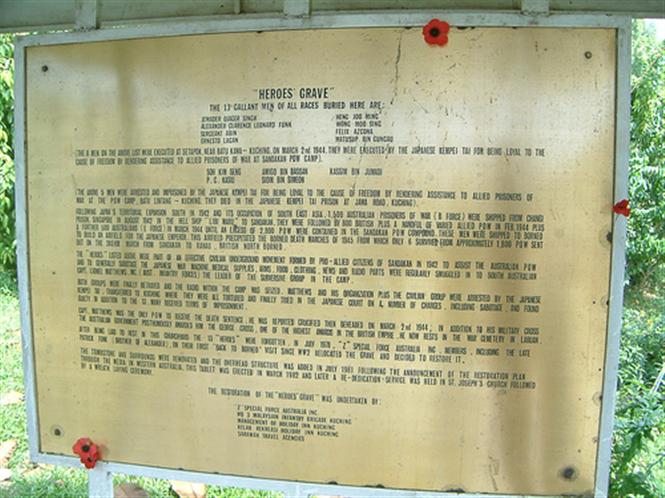Heroes Grave
Description
A rectangular concrete monument with a list of names and an information panel nearby.
History
When the Japanese Army came to Sandakan in 1942, they disarmed the Constabulary and the Volunteersit and maintained law and order until the arrival of the civilian administrators from Japan. Other than the increasing economic hardship and social deprivations typical of war, life in Sabah under the Japanese Occupation was bearable. Things began to change, however, with the arrival of Australian prisoners of war.
The locals of Sandakan felt compassion for the POWs’ plight and sorry state of physical being and clandestine activities began. Apart from secretly supplying the POWs with much-needed food and medicine, the locals also passed on news from the outside world.
The most daring feat by the locals was perhaps the supplying of radio parts as well as side arms and ammunition to the POWs. The radio, constructed from the parts provided, was in operation from the early part of 1943 to October when the underground network was betrayed and the radio discovered. The Japanese began to arrest those suspected of assisting the POWs and a total of about 53 people were arrested. They were first interned at Sandakan gaol before being transferred to Kuching for trial. Of those found guilty, eight men were executed and five more died while interned in the Kuching gaol.
The inscription on the grave reads, 'IN MEMORY OF EIGHT GALLANT MEN OF ALL RACES WHO LOYAL TO THE CAUSE OF FREEDOM RENDERED ASSISTANCE TO ALLIED PRISONERS OF WAR AT SANDAKAN ON 2ND MARCH 1944 AND ALSO FIVE WHO DIED IN PRISON FOR THE SAME REASON'
Construction Information
No information available at this time
Location
Jalan Tun Abang Haji Openg, Kuching, Malaysia.
St Josephs Cathedral is on the same road as the Sarawak Museum. The memorial is located in the cemetery.


